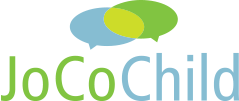Hib (Haemophilus influenzae type b)
Key Facts:
- Hib is not the flu (influenza).
- A Hib infection can cause meningitis, a very serious illness.
- Before the vaccine about 1,000 children in the US died every year from complications of a Hib infection.
What is Hib?
The infections caused by Hib include meningitis (infection of the outer lining of the brain), pneumonia, cellulitis (skin infection), joint infections and epiglottitis (severe throat swelling that makes breathing difficult by causing obstruction or closing of the windpipe). Prior to the vaccine about 20,000 children got severe Hib disease each year, and about 1,000 died. Hib-related infections can cause a child to get very sick very quickly making it difficult to treat even with powerful antibiotics.
The Hib vaccine was introduced in the late 1980s, but before this Hib was the most common cause of meningitis in children ages 3 months to 5 years. Meningitis can result in permanent hearing impairment or other neurological conditions in 15-30% of patients who survive it. About 5% of children (500 out of every 10,000) with Hib meningitis die despite antibiotic treatment. Complications of Hib meningitis include blindness, deafness, mental retardation, learning disabilities and death.
One of the unusual things about Hib is that the risk of getting it is very age dependent. Children and infants 3 months to 5 years are most at risk for getting Hib disease. The disease is fairly uncommon after 5 years of age. -AAP Red Book
Since an effective vaccine has been available, very few cases of Hib disease are now diagnosed. In fact, cases of severe Hib disease have decreased by more than 99%. If people stop vaccinating we will see more children getting sick from Hib.
Why do we confuse Hib disease with the flu?
Hib was first identified in a group of patients during an influenza outbreak in 1892, before scientists discovered that the flu was caused by a virus, not a bacterium. Hib was thus thought to be the cause of influenza. The name stuck even though we now know it is not associated with the flu. (www.historyofvaccines.org)
What are the symptoms of Hib disease?
Symptoms of Hib disease depend on the part of the body affected. Fever is present in all forms of Hib disease. Symptoms of meningitis also include stiff neck, headache and vomiting. Pneumonia symptoms include rapid breathing and a cough that produces mucus. Epiglottitis symptoms include noisy breathing and a very sore throat.
Hib Immunization
The Hib vaccine has been around since 1985 but the original vaccine was not effective in children under 18 months and not that great in older children either. Development of the polysaccharide conjugate vaccine proved to be much more effective. With today’s vaccine 95% of infants will develop immunity (protection) after 2 or 3 doses.
A vaccine, like any medicine, is capable of causing serious problems, such as severe allergic reactions. Getting Hib immunization is much safer than getting the disease.
Adverse reactions to the vaccine are uncommon but may include:
- Swelling, redness or pain at the injection site (1 in 4). This usually resolves within a day.
- Fever over 101 ° (1 in 20).
If you have an older child and are catching up on vaccines, they may not need Hib immunization. Check with your medical provider.
Common Misconceptions and Questions
Are all cases of meningitis caused by Hib?
Hib immunization protects against what was once the most common cause of bacterial meningitis, but it does not protect against all causes of meningitis. Bacterial meningitis may also be caused by pneumococcus and meningococcus bacteria as well. Since 2000 the pneumococcal vaccine was recommended for all infants, and in 2000 the meningococcal vaccine was recommended for all adolescents in 2005.
Meningitis can also be caused by a virus, but viral meningitis is often less severe than bacterial meningitis.
I can protect my child by good handwashing and eating organic foods.
While these are excellent habits to have and teach to our children, Hib is transmitted from person to person through mucus droplets that are spread by coughing or sneezing. Individuals can carry Hib and spread the disease without becoming ill themselves.
Breastfeeding and passively acquired antibodies can have some protective effect but only up until 6 months of age and the level of protection can not be guaranteed. -CDC, Pink Book
I have a healthy child, the risk of Hib is low, and my naturopath states he can treat my child in the office, so the vaccine is not needed.
Serious Hib infections, such as meningitis and epiglottitis, can be rapid and fatal. Some patients who recover from Hib meningitis suffer long-lasting neurologic problems, such as deafness. Young children with meningitis can become severely ill in a matter of hours and die within days.
What should I do if my child has been exposed to another child with Hib disease?
In some cases, household members and children under 4 years (including those at daycare facilities) who are unimmunized or under-immunized and have recently been in close contact with an infected child may need to take an antibiotic to prevent further illness. Contact your provider if you or your children are exposed.
Technically Speaking: You might hear that Haemophilus influenzae type b vaccine is given to “protect against Hib,” but that is not quite correct. The vaccine protects against the diseases caused by Hib, which is why we have mentioned several disease here, and not just ones like polio or tetanus. All together, these Hib-caused infections are generally referred to as “Hib disease.”
Sources
Voices of Meningitis
The Children’s Hospital of Philadelphia
Vermont Department of Health
